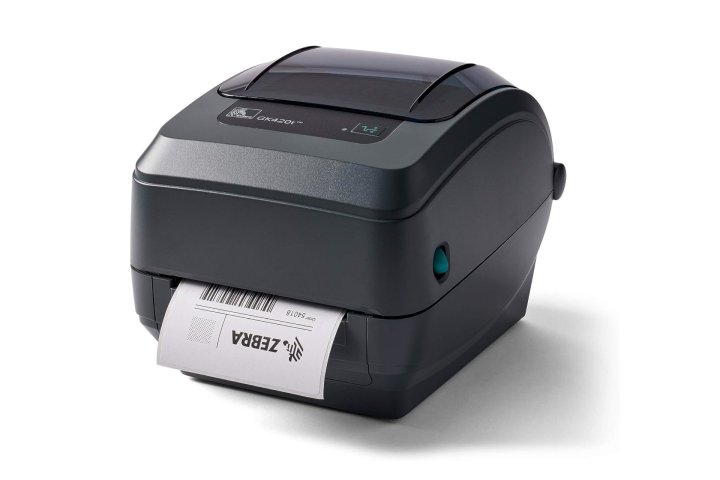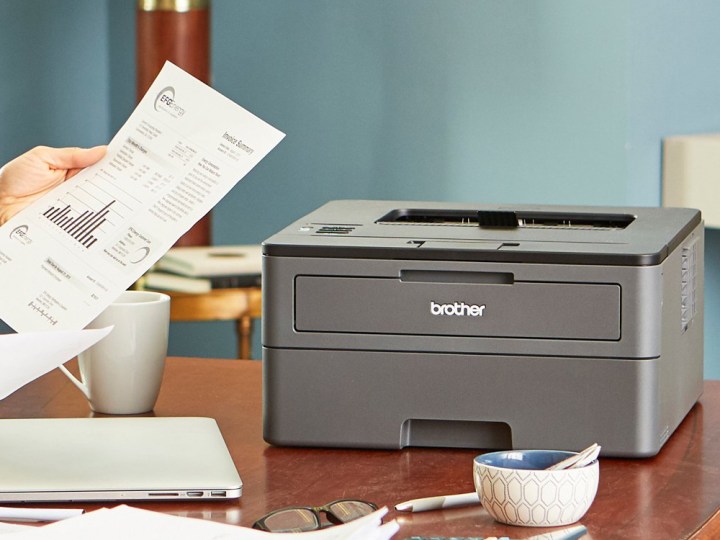
Among the best printers, you’ll mostly commonly find inkjet and laser models. Lesser-known are thermal printers, which use different technology to lower costs dramatically, depending on what you print and how frequently.
What is a thermal printer?
A thermal printer is often the type used for receipts from the grocery store. The post office might use a thermal printer to print labels. Warehouses often use thermal printers for barcodes to identify products and quickly take inventory.
Thermal printers are commonplace in the business world where monochrome printers work well, but personal printers often feature color. A thermal printer might be the right choice for a home office, possibly as a secondary printer. Thermal printers are often much faster than inkjet and laser printers, making them ideal for business uses.
How does a thermal printer work?
Based on the name, you might already realize that thermal printers use heat to imprint text and graphics onto paper. The more interesting question is how heat can print on paper.
Thermal printers are typically energy-efficient, quiet, fast, and easy to maintain. The only moving parts are the paper and, in some cases, the ribbon. There’s no need for alignment, and maintenance requirements are minimal. Thermal printers work by using pressure and heat on the printhead that’s applied directly to the surface of the paper. This treatment makes the final print more robust and detailed, so it’s ideal for fine details like barcodes and shipping labels.
There are two types of thermal printers, both cost-effective. Direct thermal has the lowest running cost, but thermal transfer has certain advantages that can be essential.
Pros and cons of direct thermal

Direct thermal printers require no cartridges, ink, or toner. The print head applies heat directly to thermal paper that changes color when exposed to higher temperatures.
The output is usually black, but blue and red are also available, depending on the paper’s formulation. Thermal paper is only slightly more expensive than regular paper, so ongoing costs are very low.
Direct thermal prints are also less durable since exposure to heat will cause the text or graphics to fade over time, ruining the label or receipt.
Pros and cons of thermal transfer

Thermal transfer printers offer a wide variety of ribbon colors. Custom colors are even possible. The result is still a single-color print, but color-coding labels can be a worthwhile effort for warehouse use.
Thermal transfer printers use heat to melt wax or resin onto paper. That provides greater print durability, resisting heat, moisture, light, and friction.
A drawback is the need to replace the ribbons that hold the wax or resin, making thermal transfer a little more expensive than direct thermal. The cost difference is a fraction of a cent per label, but you still need to order and install another ribbon.
Who uses thermal printers?
Thermal printers are great for frequent monochrome or single-color printing for extended periods of time. Thermal printers use inexpensive, narrow paper that comes on a roll.
Businesses that need to print receipts, labels, and bar codes on a daily basis choose thermal printers. While the upfront cost is usually higher, the long-term value quickly exceeds the initial savings provided by an inexpensive inkjet printer.
When an inkjet is better

An inkjet printer sprays ink droplets onto paper. If you’ve ever owned an inkjet, you’re all too familiar with the cost and waste of ongoing ink cartridge replacement.
An inkjet provides multicolor prints and photo printers can even print pictures in photographic quality with coated paper. If you want to print photos while keeping costs low, an inkjet tank uses bottles to solve the ink cartridge issue.
An inkjet can also print in black-and-white, doubling as a business printer. Documents and labels are inexpensive since black cartridges cost much less than color ones.
However, most ink is water soluble. If you intend to print bar codes or shipping labels, cover the print with tape or put it inside a plastic envelope if you anticipate water exposure.
When a laser printer is better

Most thermal printers use narrow rolls of paper. If you want to print documents, a laser printer is a better choice.
Laser printers are fast, economical, and have low maintenance costs. Fused toner is waterproof and durable, so laser prints work well for labels and bar codes.
Color laser printers combine the speed of a laser with the versatility of an inkjet. You can output good-quality photos, as well as black-and-white and color documents, while keeping the cost per page low.
Do you need a thermal printer or something else?
In the home, a thermal printer will be quick and efficient, readily available to print shipping labels while your inkjet is offline waiting for a new cartridge. If the hum and rattle of a laser printer is too disruptive, a thermal printer’s near-silent operation is a relief.
A thermal printer’s single-color print and limited paper options might be too restrictive for documents. However, getting a thermal printer as a second printer might make sense as a complement to your inkjet or laser printer.
If labels, bar codes, and receipts are not part of your daily routine, you’ll be happier with an inkjet or laser printer. We put together a list of the best printers to help you find what you want.



